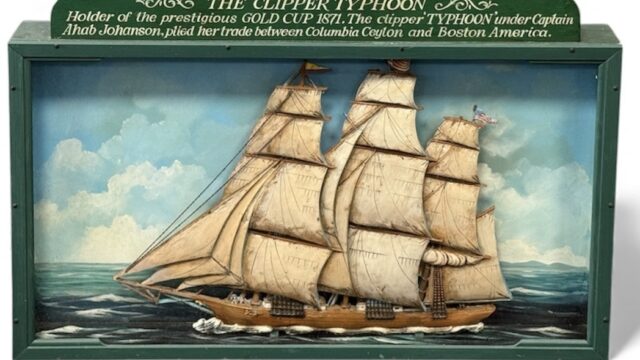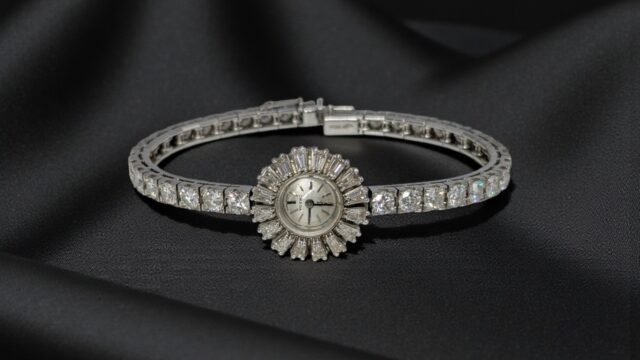Silver
Silver has long been prized as a precious metal which can be fashioned into high status objects and is one of the most popular collectables today. Its physical properties enable the skilled silversmith to manipulate the metal into a wide variety of objects, both utilitarian and decorative
When thinking about silver, it is sometimes useful to divide the vast number of objects into three general categories:
Flatware. Eating utensils like forks and spoons. Knives are called cutlery.
Hollowware. All manner of functional domestic items like plates, bowls, trays, tureens, bread baskets, claret jugs, candlesticks, goblets, teapots, cruets etc.
Smallwork. Items which can fit in a pocket, like snuffboxes, vinaigrettes, vesta cases, nutmeg graters etc.
Remember, sterling silver in the UK must have a purity of 925 parts per 1000 (.952) and will carry the sterling hallmark of a ‘lion passant’ or striding lion with raised paw. This will help differentiate it from other forms of white metal-wares like Electroplate or Old Sheffield Plate items.
Most of the antique silver that we see at Rogers Jones & Co. originates in the Georgian, Victorian and Edwardian periods (18th, 19th and early 20th C.) when the emergence of a wealthy middle class and a desire for a share of the elegance enjoyed by aristocrats of former centuries. The fashion for entertaining and interior decoration encouraged silversmiths to produce large quantities of silver eating utensils, candelabra, tureens, wine goblets, claret decanters etc. to adorn elegant dining interiors frequently complimented by Chinese porcelain and fine mahogany from the West Indies. We also see fine quality modern silver by notable designers such as Stuart Devlin and Georg Jensen.
Collectors of silver commonly focus on certain categories as the field is so vast. For example, they might collect items from a particular region or unusual assay office like Newcastle or York. Or perhaps a type of object like snuffboxes, or a maker like Nathaniel Mills, Hester Bateman or Henry Chawner.
The value of silver is based on a combination of factors which include age, style, proportion, workmanship, balance, weight, condition, maker and patina. While silver has an inherent value as a metal, many silver items available to buy at auctions are worth significantly more than the price of their scrap metal that fluctuates according to the bullion market. This is particularly the case if the item is made by a sought-after maker or has a rare or attractive design or, crucially, an early date.
The best pieces will have no damage or alteration, will retain original decoration, and carry a full set of marks grouped correctly and spaced. If considering a purchase or when considering value we need to examine the surface for changes in patination which may indicate a repair, alteration or patched on hallmark. We avoid overly cleaned objects or items that have an overly white appearance indication the use of harsh chemicals. Often, items like coffee pots or salvers (flat circular footed dishes) carry engraved armorials; these should be contemporary with the date of manufacture and can add value, however they can be added later or re-engraved, and this will be detrimental. In the same way, dedications, initials, and armorials can be erased or replaced, and this can detract from its value. Damage is most likely to occur at rims, and the joints at handles, spouts, and feet. Also raised decoration can be over polished revealing ‘pin prick’ holes in the thin metal. Lastly, like ‘marriages’ in furniture when two items are amalgamated into one, silver can be adulterated too. Common marriages include a genuinely hallmarked base or handle married to a later piece, an apostle finial mounted onto an ordinary spoon, or a spout mounted to a tankard.
Key in the word ‘silver’ to our past sales search engine and there are literally thousands upon thousands of entries. We have selected an interesting cross-section of images below, showing different price-points and a note of makers if relevant. We have included examples of smallwork, hollowware and flatware from the last three centuries.
Be sure to check out our auctions for interesting and collectible silver in Colwyn Bay and Cardiff, and feel free to ask one of our valuers for advice if you are in any doubt about an item. Or if you would just like to chat and receive a no-obligation appraisal of your silver by email, please let us know as we love to talk about historical silver.



























































































